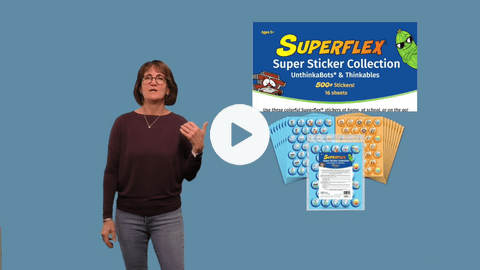
Click image to zoom.
Double click image to zoom.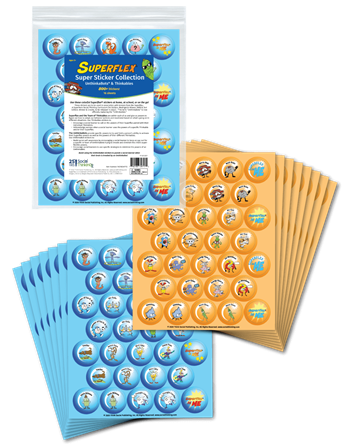

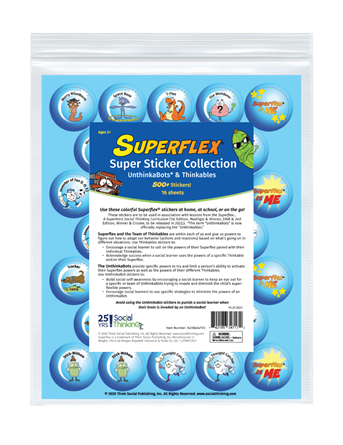
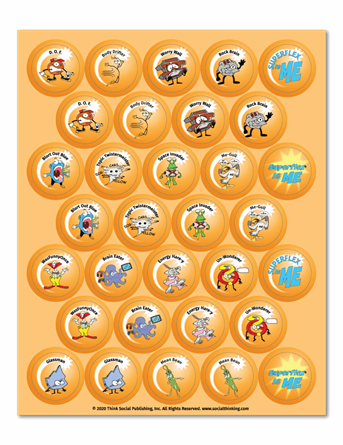
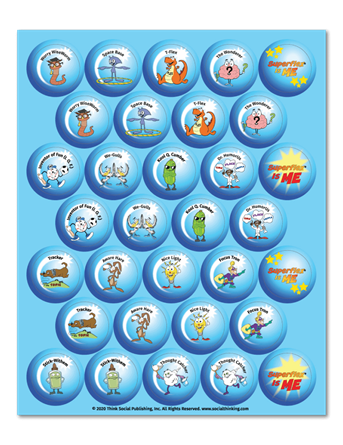
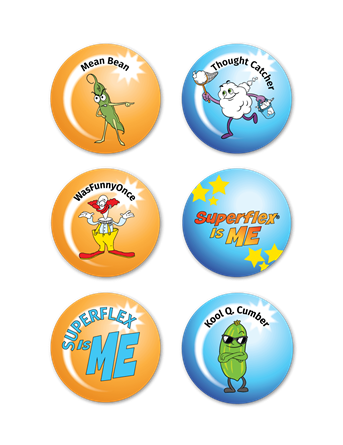
- Ages: 8-10
- Pages: 16
- Format: Other
- ISBN: 742186347172
- Published: 2020
Description
New important changes, additions, and updates!
Use more than 500 fun, colorful Superflex stickers at home, at school, or on the go! These stickers can be used in association with lessons from the Superflex Curriculum or they can be supplemental visual tools for any of the Unthinkable or Thinkable books, games, or posters. Don’t think of these as just stickers, use them to expand into your academic day by building stories through drawing or writing, calling out UnthinkaBots or Thinkables in storybooks, or reminding and noticing when students are working on building their strategies.
What's new?
- The term UnthinkaBots is gradually replacing the term Unthinkables, but it’s still OK if your students struggle to flex with the new name. The terms are synonyms. Hint: You can use this name change to teach and work on flexible thinking!)
- No more “human-like” characters or names for the UnthinkaBots. We’ve removed Mean Gene/Jean and replaced it with Mean Bean. We’re eventually moving away from One-Sided Sid and replaced it with a seagull-looking character called Me-Gull. Note: You can still use the One-Sided Sid comic to teach the concept and talk about Sid’s pet Me-Gull. We’ve also added a new character, Blurt Out Blue to replace Grump Grumpaniny. Finally, we’ve changed the name and image of Body Snatcher to Body Drifter. That just seemed like a good idea.
- For Thinkables, we’ve kept some of the “human-like” images in like Dr. Humorus and Focus Tron.
The Team of Thinkables are the strategies within each of us that give us the power to manage the UnthinkaBots. Use Thinkable Stickers to:
- Show the student that you noticed them accessing their strategy.
- Build a Thinkable wall of stickers to show which Thinkables show up in storybooks.
- Have students build their own collection of Thinkable stickers as they learn the strategies from each.
- Retell (or write short stories) about experiences from playground, small group, or classroom where Thinkable strategies occurred.
- Acknowledge classroom or small group Thinkable powers by decorating water bottles, lunchboxes, cubbies, etc.
The UnthinkaBots (we are gradually changing the term Unthinkables to UnthinkaBots over the course of 2021-23). Each UnthinkaBot (or Unthinkable if you have existing materials) has unique powers to get us all to forget to use our Superflexible thinking and doing. Use UnthinkaBot stickers to:
- Build social awareness of when UnthinkaBots show up in literature or videos. Students can work in teams to find instances of when characters are showing signs of UnthinkaBot powers (e.g., characters worrying in a story have Worry Wall in their brains).
- Use the stickers as a tally to show classroom UnthinkaBots that have been managed (or are in the process of being managed) by Thinkable powers.
- Write or draw stories about Social Town using the stickers to represent events that citizens encounter. For example, give students the situation and then pass out an UnthinkaBot sticker to represent a kickoff event (e.g., Brain Eater shows up during homework time, WasFunnyOnce shows up during teacher talk time, etc.).
NOTE: Avoid using the stickers to call out behaviors in individuals. Both UnthinkaBot and Thinkable stickers are to be used as fun and teaching tools.
Award-winning Social Detective & Superflex Series
Our award-winning Social Detective & Superflex series teaches social observation, social awareness, perspective taking, flexible thinking, and self-regulation. Click here to explore all our Social Detective & Superflex resources—why this social emotional learning series has sold more than 447,000 copies worldwide!
Related Materials

San Francisco Bay Area, CA | Nov 30 - Dec 1, 2023
Speakers: Ryan Hendrix, Kari Zweber Palmer
For two days we’ll deeply explore our powerful social learning curricula for teaching early learners and elementary school-age children foundational social concepts and how to implement them in specialized and general education settings as Tiers 1, 2, 3 learning support. On Day 1 learn how to teach with fidelity key strategies, vocabulary concepts, and innovative practices from our award-winning We Thinkers! Series to help early learners (ages 4–7) develop social competencies for collaborative play and learning in a group setting—the foundations for social, emotional, and academic learning. Newly updated Day 2 is filled with innovative strategies, lessons, and activities that will equip you with the tools to teach kids (ages 7-11) the Social Detective & Superflex series with fidelity using two new teaching curricula. Discover creative ideas for supporting social observation, social self-awareness, self-regulation, conflict resolution, and working and learning in groups.
Learn More





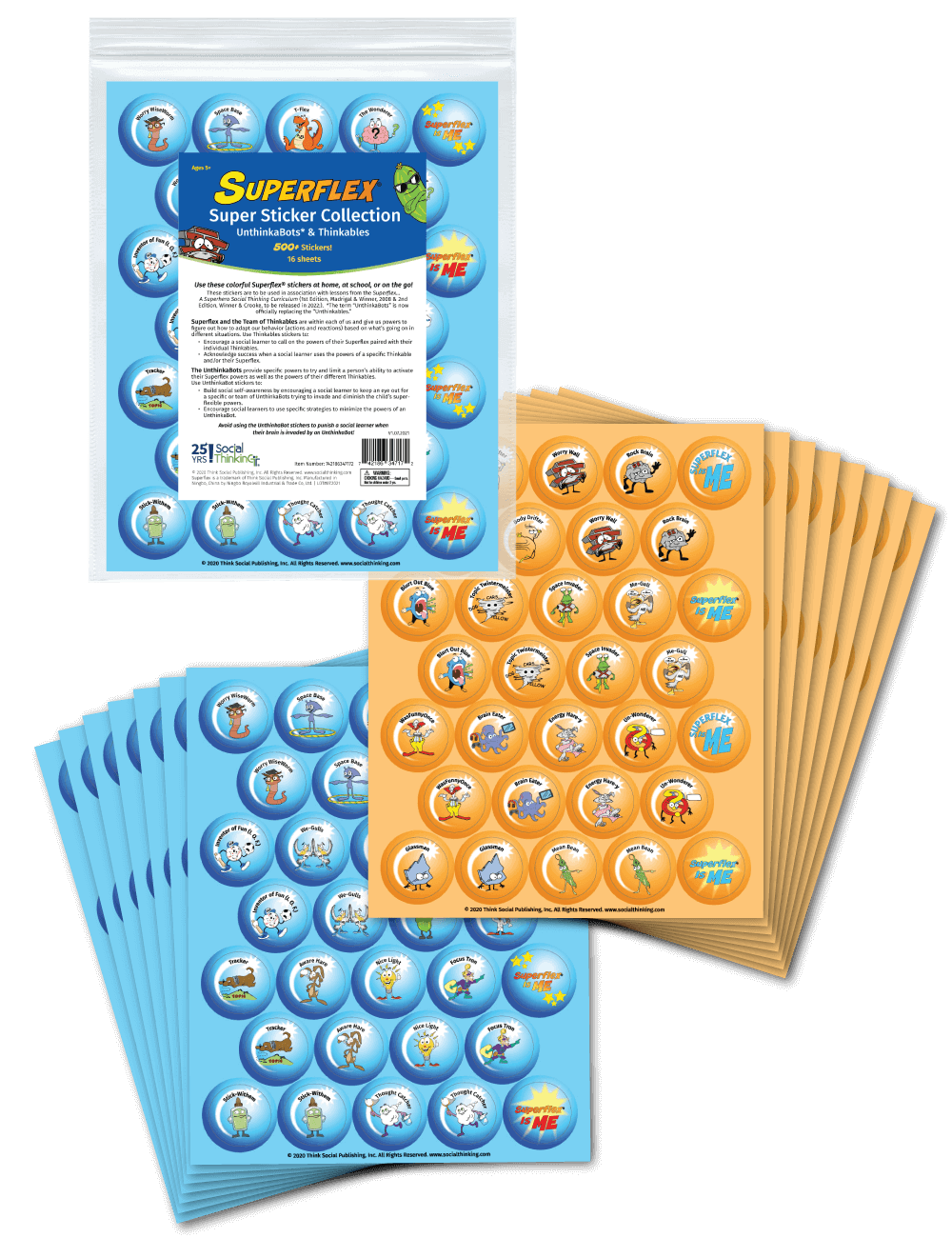


Superflex Super Sticker Collection: Thinkables & UnthinkaBots
Tell us something good!
There was a problem adding this comment. Plaease try later.
Please log in